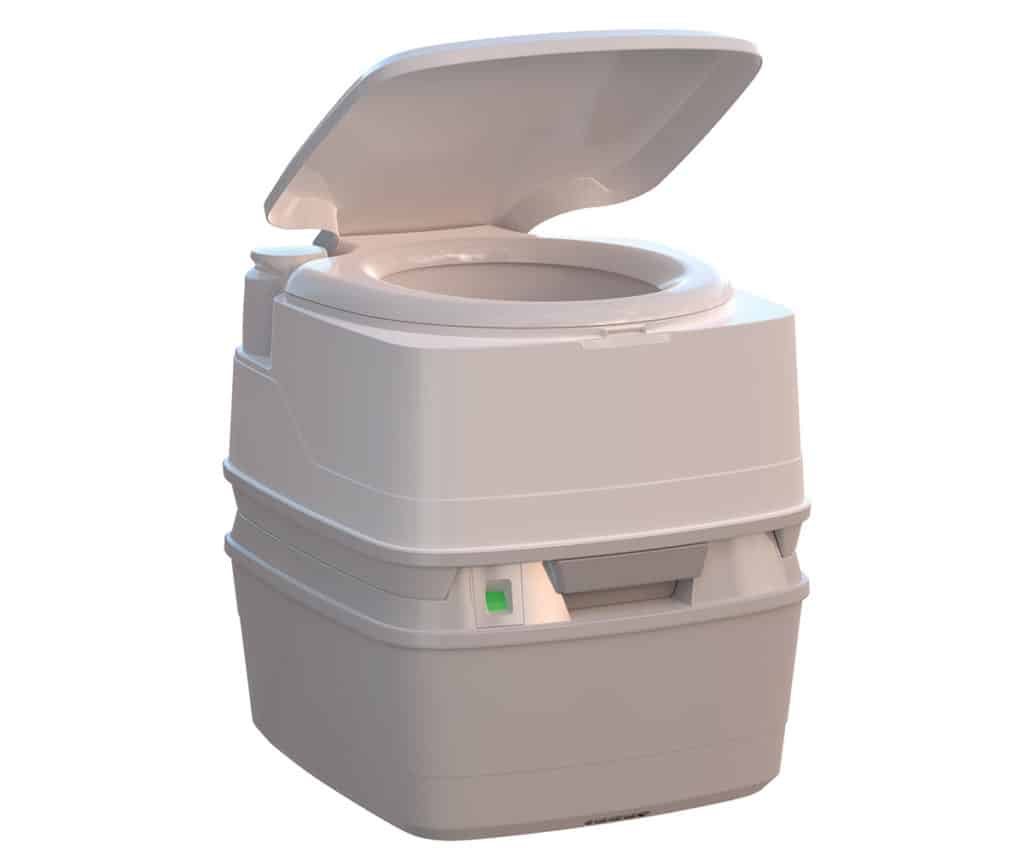
Portable toilets satisfy the ever-increasing restrictions on waste disposal, rid you of smelly holding tanks and are even beginning to look pretty good aesthetically. Consider the following points before making your purchase.
MSD or Not
There are portables that can also be plumbed to a deck plate and give you the option of using a pump-out facility or carrying the waste tank to a shoreside restroom.
Mounting Kit
This is a must. You don’t want the unit sliding around while underway in rough water. Check whether fore-and-aft or side-to-side mounting brackets best suit your intended mounting location.
Blow vs. Injection
Blow-molded polyethylene has a satin or textured finish that looks good but can attract dirt. Injection-molded ABS plastic has a smooth, more easily cleaned finish.
Carry Handle
An ergonomically designed handle will make transporting a full waste tank easier. Keep in mind a full tank can weigh as much as 50 pounds, so check the handle for sturdiness too.
Tank Capacities
Needed tank capacity is totally dependent on use, but in our experience, smaller tanks (average 2.6 gallons) serve their purpose. For weekending, we say get a larger tank in the four- to five-gallon size range to ensure enough capacity.
Seat Dimension
There is no standard seat dimension. Some are called “adult” size, some are “full” size, and some aren’t defined at all. Take a look at the seat, check it against your butt, and make a decision.
Overall Dimensions
Most marine head mounting locations have little room to spare. Prior to purchasing, carefully measure the available space and make a cardboard mock-up of the unit you’re considering.
Tank Level Indicator
A visual tank level indicator is like a fuel gauge on a gas tank, except a full gas tank is a good thing while a full waste tank is not.
Paper Dispenser
An integrated, covered paper dispenser is a great feature. It keeps the head neat and protects the paper from stray water spray. Be sure the side with the dispenser has room to open.
Vacuum Release
The waste tank employs a vacuum as part of the flushing procedure. A vacuum release is a handy feature that allows for smooth, even flow when disposing of the wastewater.
Bellows vs. Pump Flush
Corrugated bellows pumps are traditional and easy to replace but move less water per stroke. Piston pumps are more complex but move more water per pump.
Quick Tip: Purchasing an optional spare waste tank is a way to increase your capacity without increasing the size of the portable toilet.








